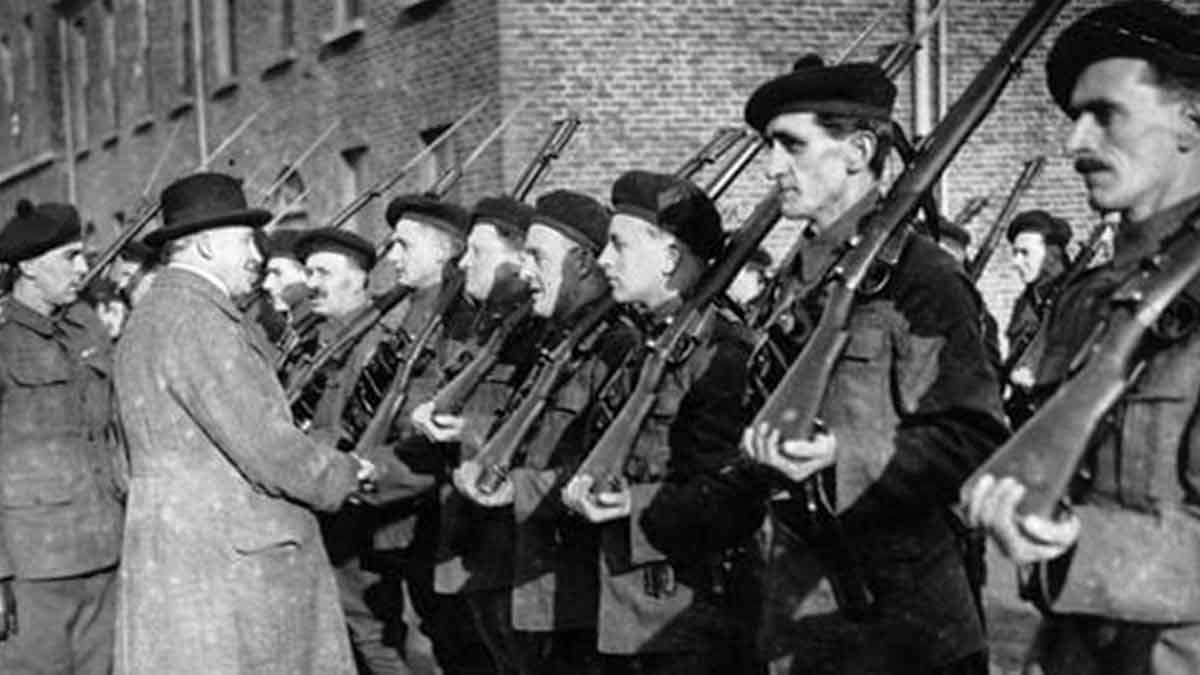Planned Attack on Woodstock House
BY JOHN FITZGERALD
(Part two)
A few months ago, I included a piece about Woodstock House and its checkered history. It played a crucial role in the War of Independence. The British Auxiliaries had taken over this mansion- which was the home of the Tighe family- in August 1920 and it served as their regional Headquarters.
The subsequent burning down of the house following the withdrawal of British forces from the area is well known and the shell of the once stately edifice still stands. Less often alluded to, however, is the fact that Republicans had planned an earlier attack…while the occupiers were still in and around the building.
The mansion’s strategic position outside the village of Inistioge made it an obvious choice for the Auxiliaries, later joined by the more ruthless Black and Tans. Being just 16 miles from Kilkenny City, 15 miles north of Waterford, and close to the Wexford border, it was ideally situated for its new purpose.
Within days of the troops moving into this once proud and stately home, its reputation as the seat of a benevolent family- the Tighes had always treated the local population with respect -evaporated, to be replaced by ghastly images of oppression and fear.
Operating from Woodstock, the Tans carried out raids all over the Southeast. The sight and sound of their Crossly Tenders screeching to a halt outside the homes of suspected rebels meant only one thing: the interrogation rooms at Woodstock.
Word spread around the county and beyond about the infamous Major Bruce, a one-armed officer who had devised numerous methods of torture to extract information from detainees. (In a previous article I wrote about Major Bruce’s encounter with Big Jim Bolger of Callan and his ultimate comeuppance when he tackled the manager of Kells Creamery.)
Because of its military significance and the ill-treatment of prisoners that occurred there, the IRA was determined to attack Woodstock mansion. Richard Mulcahy, the IRA Chief of Staff in Dublin, sent orders to the Kilkenny Brigade to prepare an all-out assault on the hated nerve centre of British military occupation.
Tom Tracey and Jimmy Lalor were the highest-ranking officers in the Brigade and as such had to attempt to implement this ambitious plan. Lalor’s job was to estimate the strength of the Auxiliary force at Woodstock. IRA volunteers in Inistioge informed him that 45 soldiers were stationed there.
Tracey and Lalor met the IRA leaders in Dublin. They learned that the famed Republican, Ernie O’ Malley, was to take charge of the attempt to storm the Auxiliary HQ.
Mulcahy had some bad news for Jimmy Lalor. His estimate of 45 troops stationed at Woodstock was way off the mark, he told the Kilkenny man. There were at least ten times as many!
It was agreed that O’ Malley would travel to Kilkenny and meet the county IRA Brigade leaders at Stallard’s Cinema in Parliament Street. Tom Stallard was a trusted Sinn Fein member and IRA activist. But O’ Malley had to defer his visit because the Tans arrested Lalor and Tracey in a swoop on the homes of suspected rebels in the city: The two men had to sit out the war in a prison camp.
Their loss was sorely felt in the Republican community: They had played active roles in the seizing of Hugginstown barracks, a milestone in the county’s war effort. On December 4th 1920, O’Malley met Commandant Jim Roughan of the IRA’s Callan Battalian at Stallard’s Cinema. He was anxious to know what manpower and military resources the Kilkenny Brigade had available to undertake what would have been its biggest engagement to date.
The following day, the activists met again. The Lord Mayor of Kilkenny, Peter de Loughry, and Edward Comerford, a schoolteacher, replaced Tracey and Lalor as Brigade leaders. Other changes were also made in the structure of the guerrilla force.
Unfortunately, O’ Malley was a stickler for protocol and entered the names of all the promoted activists and re-assigned officers in his notebook-not a wise move given the dangers posed by such written evidence of complicity in the uprising against British rule.
O’ Malley was a brave man, deeply committed to the Republican cause. He was also bull-headed, proud, and stubborn. He announced to his comrades that he intended to stay in the home of James Hanrahan of Cappagh, Inistioge. This alarmed almost everybody else at the meeting.
His comrades informed him that Hanrahan’s house was raided by the Tans on a regular basis. It would be insane to visit the place, let alone seek accommodation there; he was warned. They suggested Graiguenamanagh as a safer hideout option.
But O’Malley was adamant: He would stay at Hanrahans, and nobody was going to talk him out of his decision. He arrived in Kilkenny and set off for Inistioge in the company of Ned Holland, a draper’s assistant at Kilkenny’s Monster House, and a number of other volunteers. They reached Cappagh, about a mile from Inistioge on the Thomastown side, late at night…
(To be continued…)





















